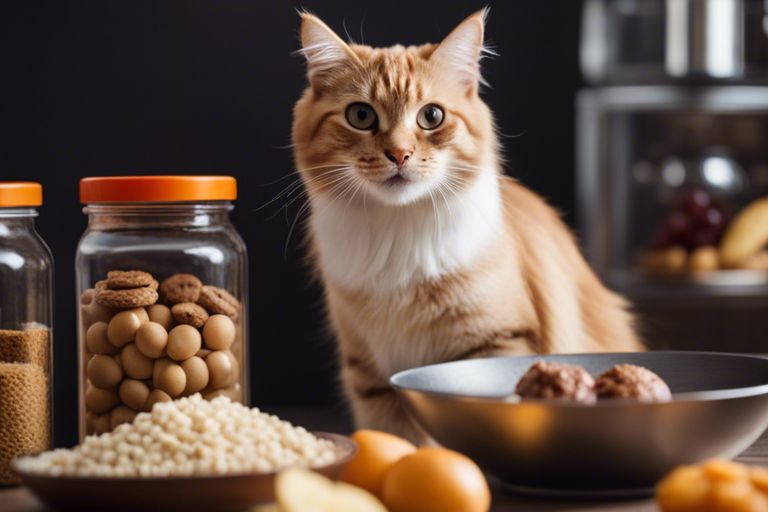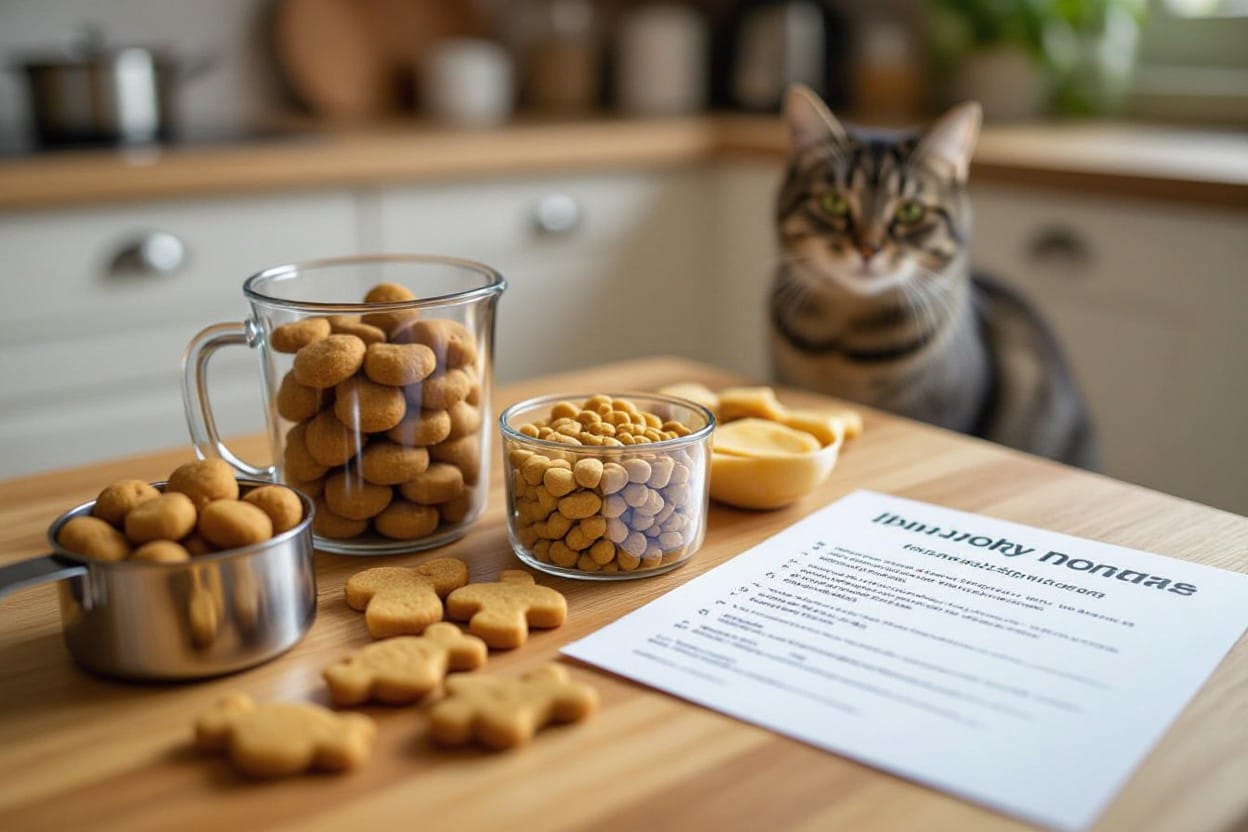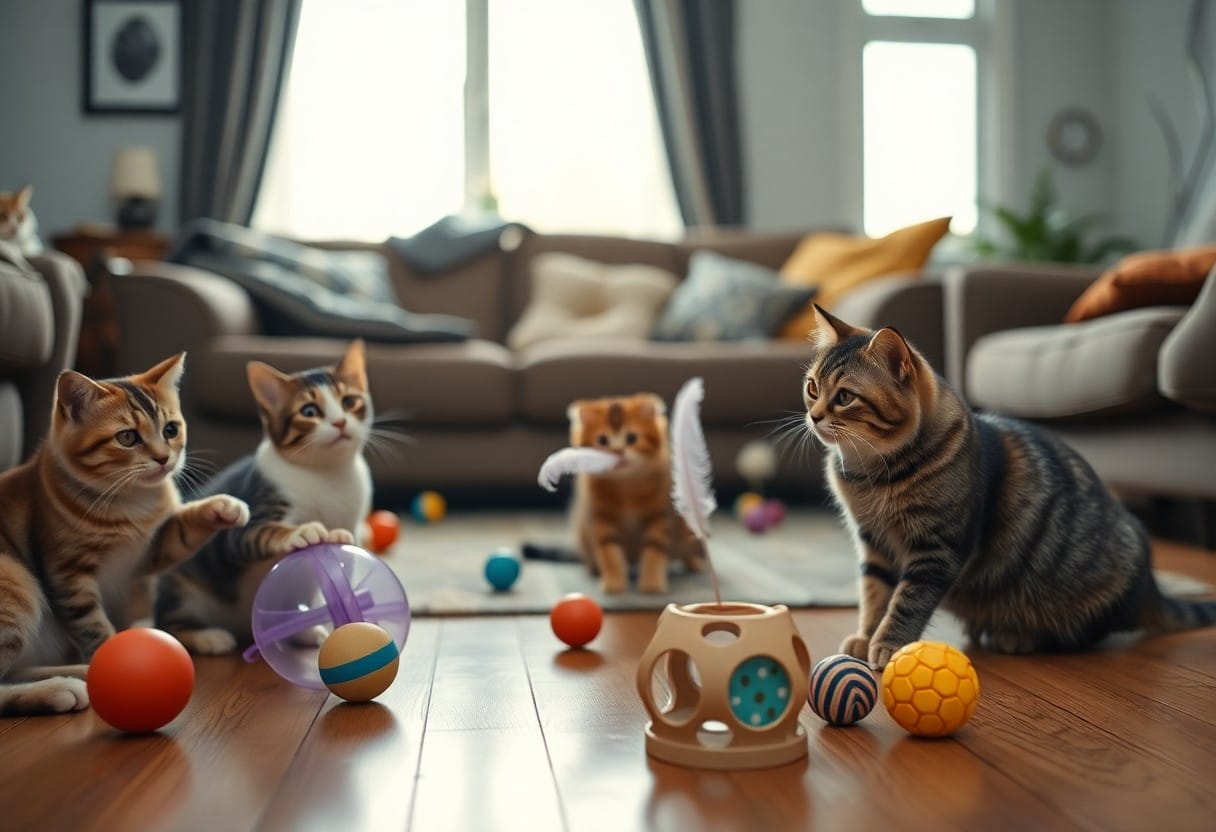Most cat owners are aware of the joy that treats can bring to their feline companions, but did you know that cat treats can also offer important nutritional benefits? When chosen thoughtfully and given in moderation, treats can provide extra nutrients, promote dental health, and even strengthen the bond between you and your kitty. In this blog post, we will examine into the nutritional advantages of including cat treats in their diet.
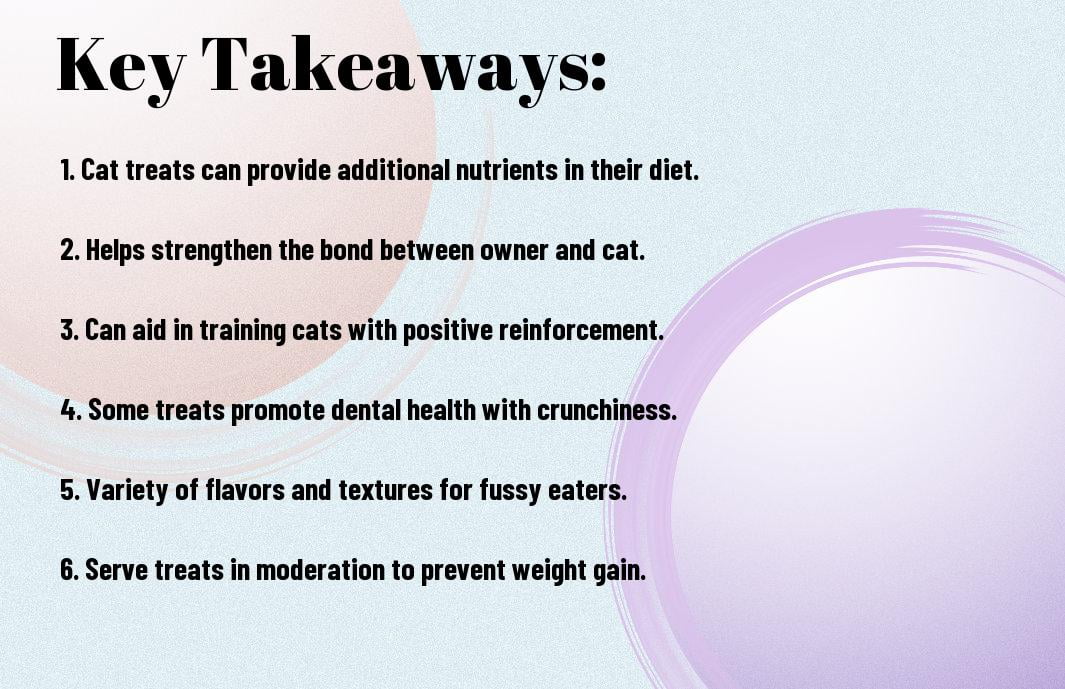
Understanding Cat Treats
While cats primarily rely on their main meals for nutrition, cat treats can serve as valuable supplements to their diet. These treats are usually tasty and appealing to cats, making them a useful tool for training, rewarding good behavior, or simply showing love and affection to your feline friend.
Types of Cat Treats
To provide a variety of options for your cat, there are different types of cat treats available in the market. These include soft treats, crunchy treats, freeze-dried treats, dental treats, and liquid treats. Each type offers unique textures and flavors to cater to different preferences. Importantly, always check the ingredients list to ensure the treats are safe and suitable for your cat’s consumption.
| Soft Treats | Easy to chew and digest |
| Crunchy Treats | Help promote dental health by reducing tartar buildup |
| Freeze-Dried Treats | Retain most of their nutritional value |
| Dental Treats | Designed to aid in dental care by reducing plaque and tartar |
| Liquid Treats | Provide hydration along with a tasty treat |
Regular Cat Treats vs. Nutritional Supplements
On top of providing enjoyment, cat treats can also offer additional nutritional benefits when formulated with crucial vitamins, minerals, and antioxidants. For instance, some treats are enriched with taurine, an amino acid crucial for a cat’s heart and eye health. It is crucial to strike a balance between giving regular cat treats for indulgence and opting for treats that double up as nutritional supplements for your cat’s overall well-being.
Nutritional Composition of Cat Treats
Macronutrients in Cat Treats
Assuming you choose high-quality cat treats, they are formulated to provide a balanced nutritional profile for your feline friend. Cat treats typically contain macronutrients such as proteins, fats, and carbohydrates. These macronutrients are crucial for your cat’s overall health and well-being.
Proteins in cat treats are crucial for maintaining your cat’s muscle mass and supporting their immune system. Fats provide a concentrated source of energy, support healthy skin and coat, and aid in the absorption of fat-soluble vitamins. Carbohydrates in cat treats can offer a source of quick energy, although cats do not have a dietary requirement for them like they do for proteins and fats.
Vitamins and Minerals in Cat Treats
The nutritional content of cat treats also includes crucial vitamins and minerals that are vital for your cat’s health. These may include vitamins such as A, E, and B-complex vitamins, as well as minerals like calcium, phosphorus, and magnesium. Vitamins are crucial for various functions in your cat’s body, including vision, immune function, and energy metabolism. Minerals play a crucial role in maintaining strong bones and teeth, proper nerve function, and fluid balance.
For instance, vitamin A is crucial for your cat’s vision and immune system, while calcium is crucial for bone health and muscle function. By including cat treats in moderation as part of your cat’s diet, you can help ensure they receive a well-rounded nutritional intake that supports their overall health.
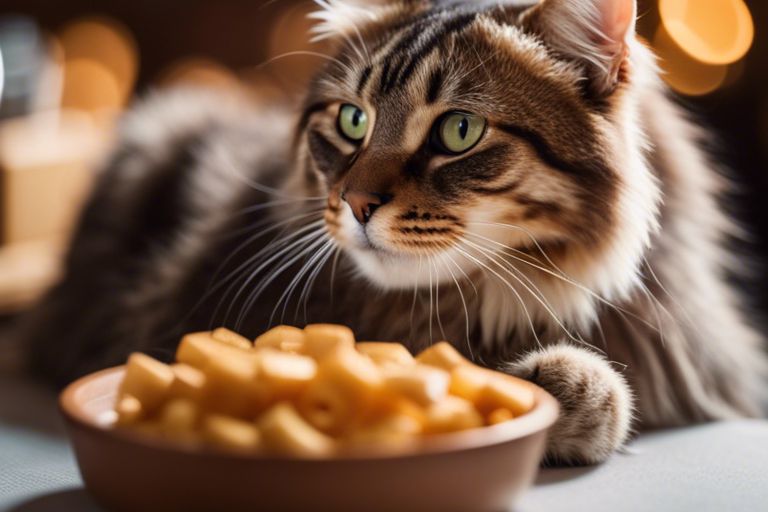
Benefits of Cat Treats for Dental Health
Dental Treats and Oral Hygiene
Health is an vital aspect of a cat’s overall well-being, and dental health is often overlooked. Including cat treats specifically designed to promote oral hygiene can be beneficial for their teeth and gums. Dental treats are formulated to help reduce plaque and tartar buildup, which can lead to gum disease and tooth decay.
Preventing Dental Diseases with Treats
One of the key benefits of incorporating dental treats into your cat’s diet is the prevention of dental diseases. By encouraging your cat to chew on dental treats regularly, you can help remove food particles and plaque that may accumulate on their teeth. This simple action can contribute to maintaining fresh breath and a healthy mouth for your feline companion.
Treats that are textured or specially shaped can also aid in promoting dental health by providing a gentle abrasive action that helps clean their teeth as they chew. Remember to choose treats that are specifically designed to support dental health and always consult with your veterinarian for recommendations on the best options for your cat.
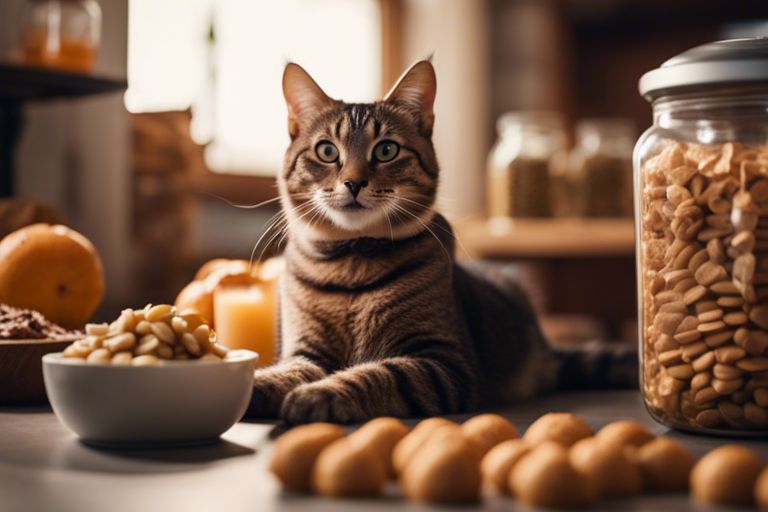
Cat Treats for Behavioral Enrichment
The Psychological Benefits of Treat-Giving
To understand the benefits of offering treats to your cat, consider it from a psychological perspective. Cats, like many animals, thrive on routine and stimulation. Giving your cat treats at certain times can create a positive association and routine that can help reduce stress and anxiety. In addition, the act of giving treats provides mental stimulation and engagement, which is vital for a cat’s overall well-being.
Moreover, the act of offering treats can strengthen the bond between you and your feline friend. Cats can be independent creatures, but by engaging in treat-giving sessions, you reinforce your role as a provider and caretaker. This small gesture can go a long way in building trust and affection with your cat.
Treats as a Training Aid
Any pet owner will tell you that training a cat can be a challenging task. However, using treats as a training aid can make the process much more manageable. Cats are intelligent animals that respond well to positive reinforcement. By offering a delicious treat as a reward for desired behavior, you can effectively communicate with your cat and encourage them to continue exhibiting that behavior in the future.
Another benefit of using treats as a training aid is that it allows you to redirect unwanted behaviors. Instead of scolding your cat for behaviors like scratching furniture or jumping on countertops, you can use treats to teach them more appropriate behaviors. This positive reinforcement technique can help modify your cat’s behavior in a gentle and effective manner.
Special Considerations for Dietary Restrictions
Cat Treats for Overweight Cats
For overweight cats, it’s crucial to be mindful of the ingredients and calorie content in treats. Look for treats specifically formulated for weight management, with lower fat and calories. Additionally, consider using treats as a tool for training or enrichment activities rather than freely feeding them throughout the day.
Treats for Cats with Food Allergies
An important consideration for cats with food allergies is to choose treats that are free from common allergens such as grains, dairy, and certain proteins. Opt for treats labeled as hypoallergenic or limited ingredient to minimize the risk of triggering an allergic reaction.
The best way to determine your cat’s food allergies is through a food elimination trial under the guidance of a veterinarian. Once you have identified the problematic ingredients, you can confidently select treats that cater to your cat’s specific dietary needs.
Safe Practices in Giving Cat Treats
Appropriate Portion Sizes
All cat owners should be mindful of the portion sizes when giving treats to their feline friends. Treats should only make up a small percentage of a cat’s daily caloric intake. One way to ensure this is by following the feeding guidelines provided on the treat packaging or consulting with your veterinarian to determine the appropriate portion size based on your cat’s size, age, and activity level.
Frequency and Timing of Treats
Sizes
Timing
When considering how often you should give treats to your cat, it is vital to avoid overdoing it. Treats are meant to be occasional rewards and should not replace a balanced diet. As a general rule of thumb, limit treats to no more than 10% of your cat’s daily caloric intake, and try to space them out throughout the day to prevent weight gain and maintain a healthy lifestyle for your cat.
Summing up
Hence, incorporating cat treats into their diet can provide a range of nutritional benefits for your feline companion. These treats can offer additional vitamins, minerals, and protein to support their overall health and well-being. However, it is important to ensure that treats are given in moderation and as part of a balanced diet to prevent any negative impact on their health.
By selecting high-quality treats and being mindful of portion sizes, cat owners can provide their pets with a tasty and nutritious supplement to their regular meals. Note, always consult with your veterinarian before making any significant changes to your cat’s diet to ensure that their nutritional needs are being met.
FAQ
Q: Why should I include cat treats in their diet?
A: Cat treats can provide nutritional benefits by offering additional nutrients, vitamins, and minerals that may be missing from your cat’s regular diet. They can also be used as a training tool or a way to bond with your cat.
Q: What are some nutritional benefits of cat treats?
A: Cat treats can be made with ingredients that promote healthy skin and coat, support dental health, aid in digestion, and boost the immune system. Look for treats that are high in protein and low in fillers or artificial ingredients.
Q: How many cat treats should I give my cat each day?
A: The number of treats you can give your cat each day depends on their size, age, and activity level. As a general guideline, treats should make up no more than 10% of your cat’s daily caloric intake.
Q: Are there any ingredients I should avoid in cat treats?
A: Avoid treats that are high in carbohydrates, such as corn, wheat, or soy, as these ingredients are not easily digestible for cats. Also, stay away from treats that contain artificial colors, flavors, or preservatives.
Q: Can cat treats be used as a meal replacement?
A: Cat treats should not be used as a meal replacement as they do not provide all the imperative nutrients that cats need to stay healthy. Treats should be given in moderation and as a supplement to a balanced diet of high-quality cat food.
